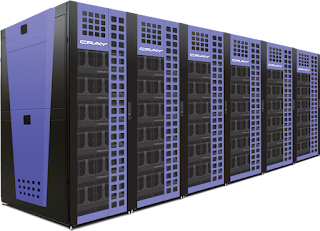In this post, we will also cover the main topic of the Classification of Digital Computers, and this post will also be made on basic computer skills. For people who are beginners in the realm of computers, this post will be very helpful. In the previous posts, we covered some topics, including an Introduction to Computers, Uses of Computers, Characteristics of Computers, History of Computers, Generation of Computers, and Types of Computers.
We’ll discuss and cover the following topic. Visit “BasicComputer Course Lesson 3” on our YouTube Channel.
You also review our previous posts given below:
- Introduction to Computer System
- Uses of Computers
- Characteristics of Computers
- History of Computers
- Generation of Computers
- Types of Computer
Classification of Digital Computers
Digital Computers are classified according to size, speed, and memory capacity, Computers are of different types:
- Supercomputer
- Mainframe Computer
- Mini Computer
- Micro /PC Desktop Computer
Supercomputer
Supercomputers are very fast computers that can perform hundreds of millions of instructions per second. These are the fastest calculating devices. These computers are used by government agencies. A supercomputer is typically used for scientific and engineering applications that must handle a very large database or do a great amount of computation (or both).
Examples:
IBM’s Roadrunner is the fastest supercomputer in the world, twice as fast as Blue Gene and six times as fast as any of the other current supercomputers. At the lower end of supercomputing, a new trend called clustering takes more of a build-it-yourself approach to supercomputing.
The best-known builder of supercomputers has been Cray Research, now a part of Silicon Graphics. In September 2008, Cray and Microsoft launched CXI, a $25,000 personal supercomputer aimed at markets such as aerospace, automotive, academic, financial services, and life sciences.
Use:
- Some scientific problems and processes are so complex that you need supercomputers to tackle them.
- Climate researchers model Earth’s current and predicted future climate using supercomputers.
- Astronomers and space scientists use supercomputers to study the Sun and space weather.
- Scientists use supercomputers to simulate how a tsunami would impact a coastline or a given city.
- Supercomputers are used to simulate supernova explosions in space.
- Supercomputers are used to test the aerodynamics of the latest military planes.
- Supercomputers are being used to model how proteins fold and how that folding might affect people who have Alzheimer’s disease, Cystic Fibrosis, and many kinds of cancer.
- Supercomputers are used to model nuclear explosions. Limiting the need for real nuclear testing.
Mainframe Computers
Mainframe is an industry term for a large computer. The name comes from the way the machine is built up: all units (processing, communication, etc.) were bung into the frame. Thus the main computer is built into a frame, therefore it is called a Mainframe.
Because of the high development costs, mainframes are typically manufactured by large companies such as IBM,
Amdahl, and Hitachi.
Use of the Mainframe Computers:
Mainframe computers are used to run commercial applications and other large-scale computing purposes. It is also used in banking and insurance businesses where enormous amounts of data are processed, typically (at least) millions of records, each day.
Mini Computers
Minicomputers were introduced in the early 1960s and announced a new era in computing. They are relatively low-cost and small. This setup allowed more people to have access to computers and as a result, an era of new applications in universities, industry, and commerce was created.
Digital Equipment Corporation developed the PDP-1minicomputer in 1960, and the PDP-8 virtually conquered the market in a sweep and sold over 40,000 units. In time some 200 companies produced this type of minicomputer.
DEC got at the top of the market with the PDP-11 and with the VAX 11/780 system. The latter will become a landmark system in the history of computing.
Uses of Mini Computers:
- They offer a limited range of peripherals.
- Limited software can be used.
- There is a facility for the direct operation of the machine by the end user.
- Air conditioning is not necessary for minicomputers.
Micro / PC/ Desktop Computers
The term “Microcomputer” came into popular use after the introduction of the minicomputer. The earliest
models were often sold as kits to be assembled by the user and came with as little as 256 bytes of RAM, and no input/output devices other than indicator lights and switches, useful as a proof of concept to demonstrate what such a simple device could do.
However, as microprocessors and semiconductor memory became less expensive microcomputers in turn grew cheaper and easier to use:
Increasingly inexpensive logic chips such as the 7400 series allowed cheap dedicated circuitry for improved user interfaces such as keyboard input, instead of simply a row of switches to toggle bits one at a time.
These computers are used nowadays commonly and these computers revolutionized the computer industry because of their size and cost.
Some of the features are:
- Cheap and easy to use: Microcomputers are cheap and easy to use.
- Limited support for I/O Devices: They support very limited input and output capacities.
- Storage Capacity: They have less storage capacity.
- Software Support: These computers support a very limited number of software.
- Architecture: Most microcomputers are self-contained units, which are light enough and can be moved easily.
- Number of Operators: They are designed to be used by one person at a time.
- I/O Devices: In addition to the CPU (central processing unit), a microcomputer has an operator keyboard for input.
- Data Storage: Hard disk and floppy disk drivers are used to enter and store data and programs.
- Softcopy Output: A visual display screen and/or a printer is used to get the output.
Use of the Microcomputers
These are the most sold computers in the world. They are used for various applications ranging from business to
engineering designs. They are also used by millions of people all over the world for entertainment and personal applications.
The types of microcomputers are:
- Desktop Computers
- Laptop Computers
- Palmtop Computers
Desktop Computers
Today desktop computers are those computers that have different desktop computer cases that can be laid on the desk and they are different from tower computers based on the design of the case as in tower computers the CPU stands straight.
Today desktop computers have different monitors and keyboard systems as compared to the earlier computers which have all the systems combined. There are various such computers available like the AMD desktop computers.
Laptop Computers
A Laptop is a personal computer designed for mobile use. It is small and light enough to sit on a person’s lap while in use. A laptop integrates most of the typical components of a desktop computer, including a display, a keyboard, a pointing device (a touchpad, also known as a trackpad, and/or a pointing stick), speakers, and often including a
battery, into a single small and light unit.
The rechargeable battery (if present) is charged from an AC adapter and typically stores enough energy to run the laptop for two to three hours in its initial state, depending on the configuration and power management of the computer.
Palmtop Computers
A computer small enough to hold in one hand and operate with the other. Also called a “handtop,” these ultra-small computers may have specialized keyboards or keypads for data entry applications or have small QWERTY keyboards.
Because of their small size, most palmtop computers do not include disk drives. However, many contain PCMCIA
(Personal Computer Memory Card International Association) slots in which you can insert disk drives, modems, memory, and other devices.
Conclusion
We have created this post for the newbies who are beginners to a computer course. It is designed to develop basic
computer skills to enhance your knowledge. Also, you can review our posts on “What is Computer”, “History of Computer”, and “Computer Hardware and Software”. If there is any lack in this post or if liked it, please comment to us. Thanks
For further guidance see our following posts:
- What is a computer? | Basic Computer Skills
- Computer Hardware and Software | Basic Computer Skills
- History of Computer | Basic Computer Skills
- Types of Data | Numbers System













